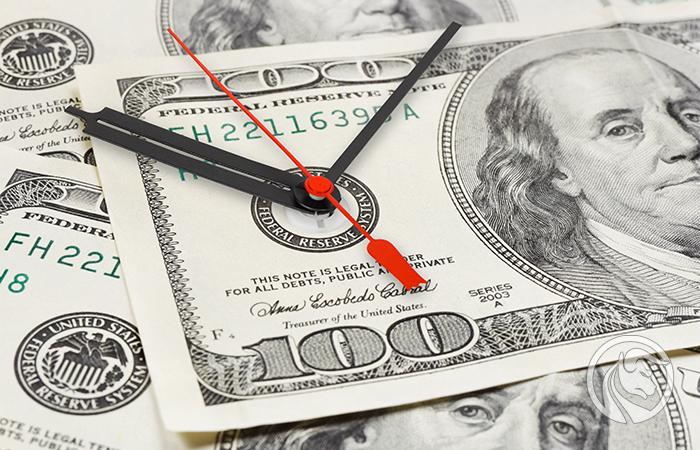Dollar smile and yen dam burst - Saxo Bank QXNUMX Forecast
Expectations of monetary policy tightening by central banks rose again in QXNUMX after the impact of the March banking turmoil quickly faded. The USD has been on a rollback as global markets continue to celebrate the final peak of the Fed rate and stable long-term US bond yields. As a result, short USD positions will face a brutal collision with reality if the US economy remains resilient and core inflation remains high, possibly involving both sides of the "smile dollar" driving the US currency strengthening: the Fed on the warpath and turmoil in market. The stakes are even higher for the Japanese yen as the longer ends of the major government bond yield curves will have to factor in the new economic acceleration as the Bank of Japan will eventually be forced to capitulate to its current yield curve control policy.
We developed our forecast for QXNUMX just after the chaos on the banking market in March. The strong decline in investor confidence at that time and the belief that it would accelerate the end of the tightening cycle of central banks due to the upcoming credit crisis confused many experts, including our analyst. However, as core inflation levels proved to be persistent almost everywhere and economies largely resilient, global central banks generally continued and even resumed tightening interest rates. Towards the end of QXNUMX, expectations for the Fed's "final rate" approached again the highs of the cycle in early March, before the fall Silicon Valley Bank. In turn, two central banks from the G10 group, Bank of Canada i Reserve Bank of Australia, after temporarily suspending the tightening cycles, resumed interest rate hikes in the second quarter. Thus, the turmoil in the banking sector was a milestone pointing to further tightening of lending policies that would eventually lead to an economic slowdown; apparently, however, "eventually" will turn out to be a much more distant date than we assumed.
The most extreme example of the re-acceleration of monetary policy tightening expectations in Q6,8 is the Bank of England, which in April saw an alarming rise in core inflation to a new cycle high of 2024%; the market then priced in the central bank to continue tightening until early XNUMX. And yet global risk appetite continues to grow as markets apparently still believe in the ideal soft landing scenario of disinflation and no recession, or at least a very shallow recession. This is the only way to interpret a strong appetite for risk in the conditions of increasingly inverted yield curves.
Dollar Smiling and Potential USD Strengthening in QXNUMX
Indeed, markets are still reluctant to accept that both inflation dynamics and the economic cycle will extend significantly and welcomed the Fed's June break in interest rate tightening, even though Powell and the company have planned two additional rate hikes later in the year. The declaration of making decisions dependent on incoming data, made by Powell during the press conference after the last meeting, means a real rollercoaster for the markets in the third and fourth quarters. The market will be poorly prepared for data on persistent inflation and high activity and the ensuing need to change the Fed funds rate.
And so we come to "dollar smile", the standard model of factors affecting the exchange rate of the US dollar. On one side of that smile, the dollar strengthens whenever there is any major global market turmoil. When markets are stressed, investors seek safety and scramble for the dollars they need to service USD-denominated assets, the predominant global liquid assets. After the Fed intervened with enough policy easing to calm the markets, the USD weakens.
The other side of the aforementioned smile leading to the strengthening of the USD is the aggressive rise in US bond yields, especially at the front end of the curve due to Fed tightening (this was especially the case in 2022, but also to some extent in 2015, when the contrast between the slow tightening of policy by the Fed and other central banks was huge). The smile of the dollar is also shaped by the rising yields on US long-term treasury bonds (the most traumatic example is the "hysterical reduction" of asset purchases in 2013, as well as the situation in 2018, when both the Fed and market forces drove the entire yield curve up Trump's supply-side tax reforms last year).
The middle part of the smile is when there is no significant turbulence or when the Fed is not making any dramatic moves. As a result, the USD is exposed only to external factors, which essentially means a depreciation of this currency. When, for example, much of the policy tightening Fed was included in the valuations at the end of 2022, long-term US Treasury yields peaked (well ahead of their peak (so far!) at the front end of the curve in March this year), the USD depreciated and could lead more significant events in other countries. These events included, among others: stronger policy tightening by EBC. Later, AUD, CAD and GBP took center stage due to the significant revision of policy expectations mentioned above.
Regarding QXNUMX, we believe markets are placing too much faith in a soft landing for inflation and thus in central bank policy. This could activate one or even both sides of the dollar's smile: persistent inflation and a tight labor market could force the Fed to continue raising interest rates much more than the market imagines at the end of QXNUMX. The most dramatic scenario would be for the economy to strengthen again, as this could cause US long-term Treasury yields to spike sharply. Given the near-euphoric global risk appetite towards the end of QXNUMX, we are keeping a close eye on XNUMX-year benchmark US Treasuries yields that could see reality crash brutally and the USD strengthen towards new cycle highs. Of course, as long as the incoming data stays consistent with the disinflation and soft landing narrative and long-term US bond yields remain unchanged, the USD may fall in value, but beware of the dollar's smile should this change.
While waiting for the Bank of Japan to break the dam
Analyzes of the JPY situation at the end of Q0,10 indicate that the currency is approaching record lows from last fall, even if the weaker dollar means that the USD/JPY pair has yet to face the highs of the cycle. The most obvious factor behind the weakening of the yen in Q0,50 was the widening of monetary policy spreads again; while central banks in other countries continued to tighten their policies, the Bank of Japan remained unfazed, keeping its benchmark rate at -XNUMX% and the range of +/- XNUMX% for XNUMX-year Japanese government bonds (JGB) - in other words, controlling the yield curve . If our view that economic growth and the cycle of interest rate hikes could continue is confirmed, it would be a real challenge for both Bank of Japan, as well as for the very tight JPY valuation.
The GBP/JPY rate has definitely increased this year because of expectations Bank of England have been heavily revised upwards due to persistent inflation, while the Bank of Japan seems unfazed about the continuation of its policy. This move could unexpectedly extend and/or end depending on whether the Bank of England is able to tighten policy enough to gain credibility in terms of inflation at the long end of the yield curve and whether the Bank of Japan eventually capitulates and takes steps to exit more than a decade of ultra-loose policy and yield curve control. The GBP/JPY chart is shown against the background of the XNUMX-year British and Japanese government bond yield spread.
At its first meeting in April, chaired by new governor Kazuo Ueda, the Bank of Japan declared that it would carry out a policy review of up to eighteen months, clearly aiming to be at least on the other side of the wage negotiations in March next year before making more significant policy decisions and possibly hoping that inflation will simply disappear. However, circumstances may prevent the Bank of Japan from delaying its decision for so long.
JPY volatility can only accelerate if the global economy shows signs of recovery and commodity prices and long-term government bond yields increase. The JPY has always been more sensitive to long-term yields than to global yields, which is the main reason USD/JPY peaked last fall, concurrently with US long-term Treasury yields peaking. As an aside, the Bank of Japan's loose monetary policy is likely one of the pillars supporting the strong global liquidity and risk appetite that made the markets rebound so aggressively after the March turmoil, especially on the wave of enthusiasm for Japanese stocks (the JPY hedge was so cheap!) . A JPY reset up after the Bank of Japan's capitulation could cause a "dam break" big enough to have a significant contagion effect on global markets. Interestingly, at the end of June, the implied volatility of options and the skewness of JPY options suggest a decline in faith in the potential for any JPY volatility. These parameters are worth keeping an eye on: JPY has the most stretched value of any currency, and if the bond market is wrong about the cycle, the market may make a mistake, driving JPY down due to the risk of the Bank of Japan breaking the dam.
About the Author

John Hardy director of currency markets strategy, Saxo Bank. Joined the group Saxo Bank in 2002 It focuses on providing strategies and analyzes on the currency market in line with macroeconomic fundamentals and technical changes. Hardy won several awards for his work and was recognized as the most effective 12-month forecaster in 2015 among over 30 regular associates of FX Week. His currency market column is often cited and he is a regular guest and commentator on television, including CNBC and Bloomberg.






















![Forex Club – Tax 9 – Settle tax on a foreign broker [Download the Application] Forex Club - Tax 9](https://forexclub.pl/wp-content/uploads/2024/02/Forex-Club-Podatek-9-184x120.jpg?v=1709046278)
![Trading View platform – solutions tailored to the needs of traders [Review] trading view review](https://forexclub.pl/wp-content/uploads/2024/03/trading-view-recenzja-184x120.jpg?v=1709558918)
![How to connect your FP Markets account to the Trading View platform [Guide] fp markets trading view](https://forexclub.pl/wp-content/uploads/2024/02/fp-markets-trading-view-184x120.jpg?v=1708677291)
![STI 30 – Singapore Stock Exchange – Does a great country also mean a great index? [Guide] singapore stock exchange sti 30 singapore](https://forexclub.pl/wp-content/uploads/2024/05/singapurska-gielda-sti-30-singapur-184x120.jpg?v=1715232642)
![CRB index – one of the popular commodity market benchmarks [Guide] crb index](https://forexclub.pl/wp-content/uploads/2024/05/indeks-crb-184x120.jpg?v=1715055656)
![How to invest in ChatGPT and AI? Stocks and ETFs [Guide] how to invest in chatgpt and artificial intelligence](https://forexclub.pl/wp-content/uploads/2023/02/jak-inwestowac-w-chatgpt-i-sztuczna-inteligencje-184x120.jpg?v=1676364263)






![Izabela Górecka – “Success on the market depends not only on knowledge, but also on emotional stability” [Interview] Izabela Górecka - interview](https://forexclub.pl/wp-content/uploads/2024/04/Izabela-Gorecka-wywiad-184x120.jpg?v=1713870578)
![WeWork – the anatomy of the collapse of a company valued at $47 billion [WeWork, part II] wework bankruptcy story](https://forexclub.pl/wp-content/uploads/2024/04/wework-bankructwo-historia-184x120.jpg?v=1711729561)
![Adam Neumann – the man who screwed up Softbank [WeWork, part AND] adam neumann wework](https://forexclub.pl/wp-content/uploads/2024/04/adam-neumann-wework-184x120.jpg?v=1711728724)
![The most common mistakes of a beginner trader - Mr Yogi [VIDEO] Scalping - The most common mistakes of a beginner trader - VIDEO](https://forexclub.pl/wp-content/uploads/2024/03/Scalping-Najczestsze-bledy-poczatkujacego-tradera-VIDEO-184x120.jpg?v=1711601376)
![Learning patience: No position is also a position - Mr Yogi [VIDEO] Scalping - Learning patience - No position is also a position - VIDEO](https://forexclub.pl/wp-content/uploads/2024/03/Scalping-Nauka-cierpliwosci-Brak-pozycji-to-tez-pozycja-VIDEO-184x120.jpg?v=1710999249)
![When to exit a position and how to minimize losses - Mr Yogi [VIDEO] Scalping - When to exit a position and how to minimize losses - VIDEO](https://forexclub.pl/wp-content/uploads/2024/03/Scalping-Kiedy-wyjsc-z-pozycji-i-jak-minimalizowac-straty-VIDEO-184x120.jpg?v=1710336731)











Leave a Response